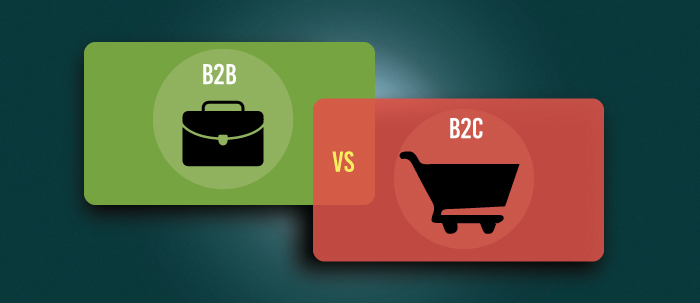After interning at Right On Interactive for the past four months, I have really come to understand the major differences between selling to another business versus selling directly to the customer. The way customer relationships are grown and nurtured truly varies depending on whether you’re dealing with an organization or an individual. With ROI being a business that sells to a lot of other businesses, there are a handful of things I have realized within the realm of B2B and B2C selling.
1. The amount of time it takes to make a decision is vastly different.
B2B: When selling to a business, it takes multiple phone calls and emails to move your prospects forward in their relationship. This is the case because the decision to buy your products affects the entire company as a whole, and may involve spending a good portion of the business’s budget as well. Businesses will need to be persuaded and assured that your product will be a good return on investment before making a decision. That prevents any decision from being a sporadic one.
B2C: When selling to a consumer, they are most likely buying for their own personal use and consumption. Quick or sporadic decision making is not unusual, as many individuals seek instant gratification. With individual customers, they are also more likely to purchase goods and services they didn’t even know they wanted or needed.
2. Relationships and positive experiences are the foundation of brand loyalty.
B2B: Whether or not a company remains brand loyal depends on the relationship and performance of the product or service. It’s about the end result and increase in the bottom line; therefore, if the business is not seeing any value in the product, they will not become a repeat buyer. Factors that influence this are prompt and friendly assistance from the customer service team, as well as proper onboarding and training at the time of purchase. Relationships usually last longer if the business is bound by contract, but that also means the relationship must be maintained and nurtured over the course of time.
B2C: They are many different types of people out there. While one person may be a die hard fan of Apple branded phones, another may refuse to spend more than a couple hundred dollars for a cell phone. Customers are influenced by price, past experiences, quality, or prestige that a product brings. They also tend to make purchases more often, and usually need to have the newest thing on the market.
3. Logic and emotion play different roles for the two groups.
B2B: For the business that’s buying your product, they are most likely purchasing from you because it makes the most sense logically. They have done their research and have come to the conclusion that your business will most likely satisfy all of their needs.
B2C: For the consumers that are buying your products, they are most likely making their decision based on emotion. Whether it is because of the advertising or a sale, they are more drawn to purchasing something based on how they are feeling.
It’s pretty clear that the two different groups make decisions based on a variety of different factors. As the product or service provider, it’s your job meet the purchasing needs of individual or business. To learn more about the different types of buying and selling decisions click here.

